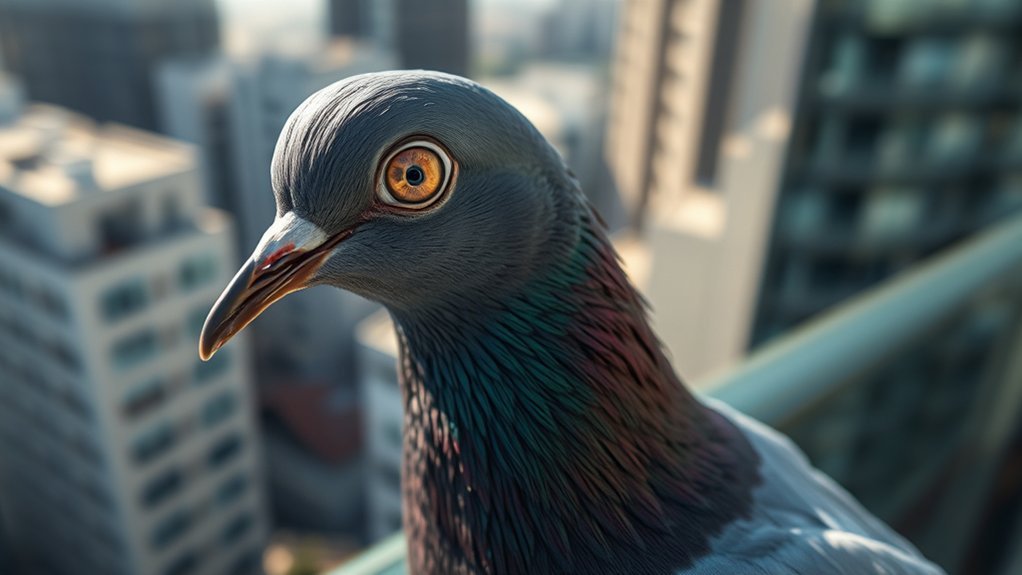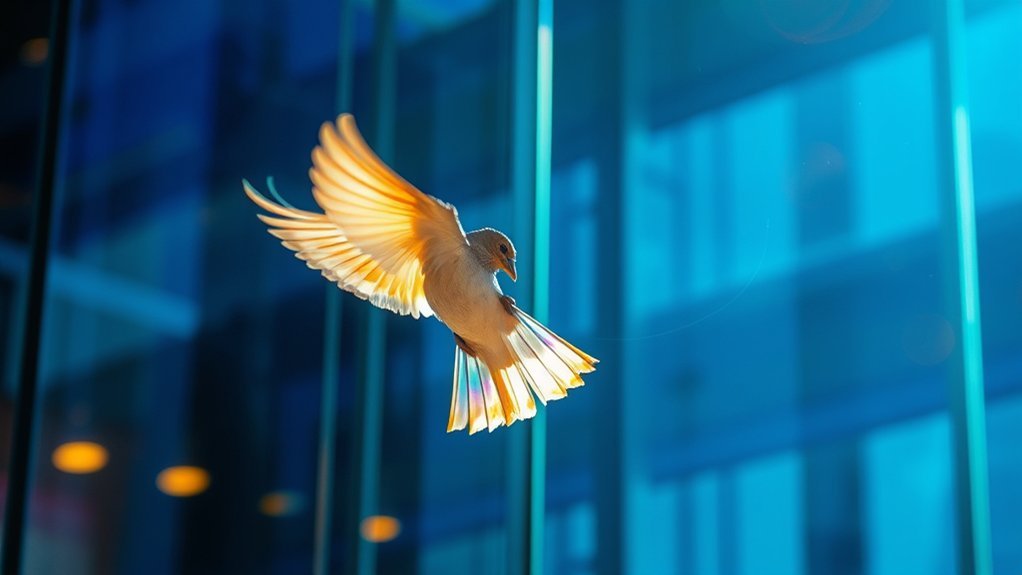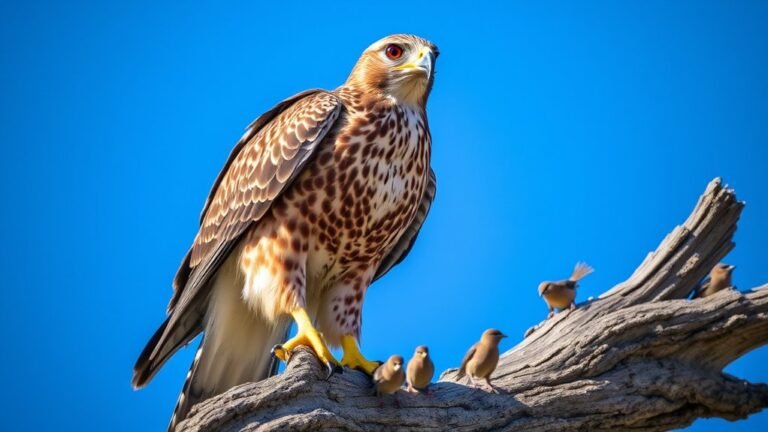Can Birds See Glass? Understanding Their Vision
Can birds see glass? Birds can see many colors and even ultraviolet light. But clear glass can be tricky for them. When birds fly, they use their vision to find their way. However, glass can confuse them since it looks invisible. This leads to many bird collisions in cities.
To understand bird vision, we should look at how it works. Birds have special eyes that help them see well, but clear surfaces like glass can be hard for them to spot. This creates a risk for birds as they may not see the glass barriers in their path.
A Quick Overview
Birds have a hard time seeing glass. Since glass is clear, they find it tough to judge how far away it is and how fast they are flying towards it.
Even though birds can see ultraviolet light really well, it doesn't help them spot clear surfaces like glass. This makes it easier for them to accidentally crash into windows.
Birds have sharp vision but often miss the signals that show there's something in their way. Because of this, they fly into windows quite often.
One way to help birds avoid hitting windows is to put on window decals or use special bird-friendly glass. These can make the glass easier for birds to see.
By understanding how birds see, we can make designs in cities that help keep them safe.
The Anatomy of Avian Vision

Birds have amazing eyes that work really well. Their eye shape helps them see more around them and judge distances better than humans can. They've lots of special cells in their eyes that help them notice tiny changes in light. This sharp vision is super important for finding food and moving around safely.
Many birds also have a special spot in their eyes called a fovea, which is loaded with these special cells. This area makes their vision even clearer.
Birds can quickly adjust their eyes to different light levels. This skill helps them see well in bright sunshine or dim light. Overall, bird vision is truly special, making them some of the best creatures at seeing in the animal kingdom!
The Color Spectrum: What Birds Can See
Birds see colors in a way that's very different from how we do. Their eyes have special parts called cones that help them see more colors. This means they can see light that we can't, like ultraviolet light. This extra ability helps birds find food and attract mates.
Their colorful vision helps them spot bright fruits or flowers and signals to other birds. Different bird species see colors in various ways. These differences help them survive in their unique homes.
Understanding how birds see colors shows us how amazing they are. It also helps us appreciate their important roles in nature and brings us closer to these fascinating creatures.
Ultraviolet Light Sensitivity in Birds

Birds can see ultraviolet (UV) light, which helps them a lot in their daily lives. This special vision allows them to notice patterns in feathers and flowers that we can't see.
Seeing these patterns is important for finding food and attracting mates.
UV light also helps birds find their way when they migrate. Many birds use UV light to help them see landmarks on the ground. This way, they can follow the right path during their long journeys.
Learning how birds use UV light shows us how unique they are. It also reminds us why it's important to protect their homes.
If we keep their habitats safe, they can continue to find their way in the world around them. Understanding this helps us appreciate birds even more!
The Challenges of Transparent Surfaces
Transparent surfaces, like glass windows, can be very tricky for birds. Birds use what they see to figure out where to fly. When they see a clear barrier, they sometimes make mistakes about how far away it's or how fast they should go. This can lead to crashes that hurt or even kill them.
Birds can't always see clear barriers because there are no visual signals to warn them. They also see ultraviolet light, but that doesn't always help them with clear surfaces.
To make things safer for birds, we can add visual markers or use different materials. This can help prevent accidents and create a safer space for both birds and people.
Working together, we can make our cities safer for everyone.
Glass Reflection and Refraction

When light hits glass, it can bounce back or change direction. This is called reflection and refraction. Both of these actions can make it tough for birds to see where they're going. Glass is clear, so light goes through it easily. But this can also make the light look different as it moves at different angles.
Birds have excellent vision, but they can easily confuse clear glass with the world around them. Refraction bends the light, which can make things look strange. Reflection can make the glass hard to see because it creates bright spots. This mix can confuse birds and cause them to fly into windows.
To help birds stay safe, we can design buildings that are friendly to them. By understanding how birds see light, we can reduce the chances of accidents.
Creating safe spaces will give birds a better chance to thrive and connect with nature around them.
Behavioral Studies on Birds and Glass
Birds often face challenges when they encounter glass structures. Researchers have observed how birds fly and sometimes crash into glass. Many birds don't see glass very well and mistake it for open air. This can lead to serious injuries or even death when they fly in cities.
Birds generally prefer areas with trees and plants rather than places with lots of glass buildings. Natural spaces help them feel safe and guide them better while flying.
Understanding how birds behave around glass is very important. This knowledge can help us create safer environments for them.
By paying attention to these issues, we can make our cities more friendly for birds. Simple steps can significantly improve their chances of survival.
Let's work together to help our feathered friends!
Mitigation Strategies for Bird Protection
Urban areas are growing, and this affects birds. One big problem is that birds often fly into windows. You can help keep them safe with simple solutions.
One way is to use window decals. These stickers break up the glass reflections, making it easier for birds to see. They're also pretty and can add some style to your windows.
Another option is to choose bird-friendly glass for new buildings. This glass can have patterns or textures that help birds see it better.
Using these ideas can make our cities safer for birds. When you share these tips with your friends and neighbors, you help create a better world for our feathered friends.
Let's work together to protect birds in our urban spaces!
Urban Design: Creating Bird-Friendly Environments
To make cities better for birds, urban design should consider what birds need while also being useful for people. We can plant trees and flowers that help create homes for birds. This helps keep our city lively with different kinds of animals.
Using special materials that don't reflect light too much can stop birds from flying into buildings. Adding paths that let wildlife cross safely can help birds move around without getting hurt.
It's also important to get the community involved. When people share their ideas, we can create buildings and parks that support both people and birds. Teaching others about birds and their needs helps everyone feel responsible for keeping them safe.
The Role of Bird Conservation Organizations
Bird conservation organizations help create friendly environments for birds in cities. They work with local governments and communities to protect birds and their homes.
These groups take action and share knowledge to keep birds safe from dangers like windows that birds can hit. They also push for rules that make sure new buildings are safe for birds.
Future Research Directions in Avian Vision
Researchers are excited to study how birds see the world. They want to learn how birds have special skills that help them live in different places.
Future studies will look closely at the brains of different bird species to see how they process what they see. Scientists plan to watch birds in their natural homes. This will help them understand how birds react to things they see, like glass windows.
By combining different ways of studying, we can learn more about why bird vision is important for their survival. This knowledge could help protect birds and reduce problems between humans and wildlife.
Frequently Asked Questions
Do All Bird Species See Glass the Same Way?
Birds do not all see glass the same way. Each bird species has different ways of seeing that can change how they notice clear things like windows. Some birds can easily avoid glass, while others may not see it as a danger, which can be very harmful to them.
How Does Weather Affect Birds' Perception of Glass?
Weather changes how birds see glass. When it's foggy or dark, birds have a harder time seeing things. Rainy or stormy weather can make them fly differently, too. This can stop them from noticing clear windows or other glass surfaces. Because of these conditions, birds may run into glass more often. Understanding how weather affects birds can help us make their environment safer.
Can Young Birds See Glass Differently Than Adults?
Young birds see things differently than adult birds. Their eyes are still growing and learning. This means they sometimes have trouble spotting glass. It can be hard for them to notice glass barriers that could be in their way. It's really important to keep this in mind to help keep them safe.
Just like we learn to see better as we grow, young birds also need time to get used to what they see. Adult birds have sharper vision and can avoid glass obstacles more easily. That's why protecting young birds from potential dangers like glass is a good idea. It helps them grow and thrive in their environment.
Are There Specific Times When Birds Are More Prone to Hitting Glass?
Birds often hit glass more during migration and when they are flying low or making quick turns to find food. Their behavior can change based on what's happening around them. This makes them more likely to crash into shiny surfaces, like windows. So, it's important to be aware of these times to help keep birds safe.
How Do Migratory Patterns Influence Birds' Interactions With Glass?
Migratory patterns change how birds interact with glass. When birds migrate, they follow familiar routes to find their way. They rely on what they see around them, especially during different seasons. This can make them more likely to fly into glass during their journey.
As birds fly, they may not notice glass windows and buildings. This is especially true when they are tired or flying at night. During migration, birds focus on getting to their destination, and they might miss seeing the glass.

Luna is the passionate founder and author of Birds and You, a website dedicated to sharing her love for birds with fellow enthusiasts. Through her engaging articles and guides, she aims to educate and inspire others to explore the fascinating world of birds. When she’s not writing, you can find Luna observing birds in their natural habitats or sharing beautiful bird photography on Pinterest. Join her on this journey to celebrate and protect our feathered friends!







